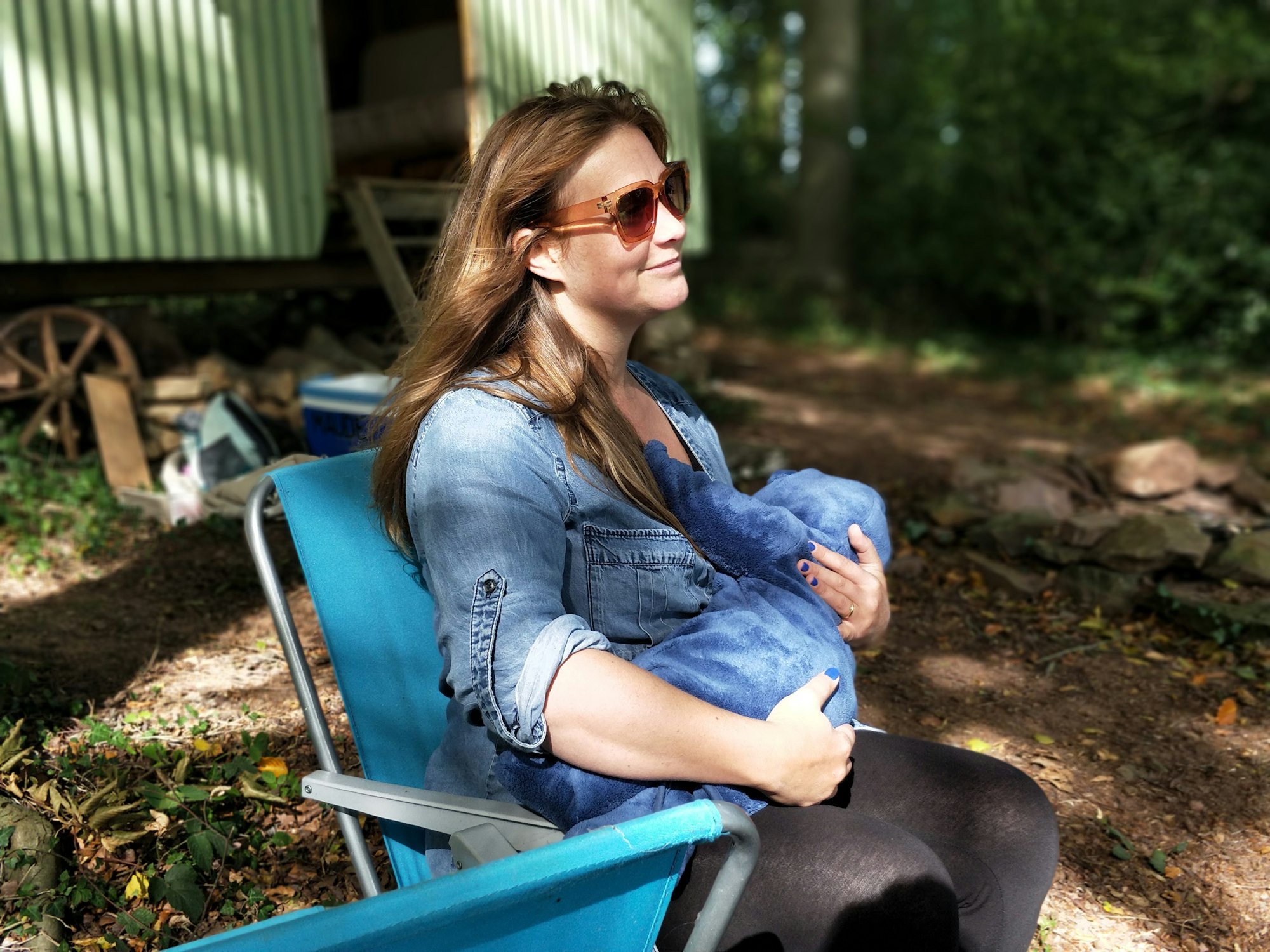Wondering where to turn when it comes to breastfeeding? Questions may abound before your baby even arrives: Is breastfeeding right for my family? Will I have enough milk? How do I know if my baby is feeding well? And—perhaps less often voiced, but equally real—will it hurt, or what if it just doesn’t go smoothly? These questions, swirling through the minds of many new parents, reveal not only a thirst for knowledge but also a desire to give their child the healthiest possible start. Breastfeeding demands a balancing act of scientific understanding, practical skills, and emotional adaptation—sometimes all at once. Why is there so much emphasis on breastfeeding, and what does the scientific literature truly say? This comprehensive exploration dives into the medical evidence, everyday realities, possible challenges, and support pathways that make breastfeeding a distinct journey for each parent—whatever choices or twists that path may entail.
Breastfeeding Benefits: Science Behind the Bond
Breastfeeding is not just a feeding routine—it’s a high-precision physiological process, sculpted across generations to deliver the exact mix of immunological protection, tailored nutrients, and developmental support an infant needs. Colostrum, the first milk you produce, is astonishingly dense in antibodies like secretory IgA and packed with living white blood cells. Imagine, with every feed, your baby receives armor against respiratory and gastrointestinal infections, a reduced risk of SIDS, protection against allergies, and lower likelihood of chronic conditions such as type 1 diabetes or childhood leukemia. It doesn’t stop there: evidence suggests a subtle but significant boost in cognitive outcomes—think neural connections built with each suckle.
For mothers, the rewards are more than a pleasant side-effect. Oxytocin release during breastfeeding coaxes the uterus to contract after birth, reducing bleeding—a detail often missed but medical gold. Over the longer term, the act of lactation (biologically, the process of milk production) slashes the risk of developing breast and ovarian cancers, helps regulate metabolism, and even supports cardiovascular health. And, crucially, this regular physical closeness underpins an emotional connection many find invaluable—hormones working in tandem with affection and gaze.
Beyond the individual, breastfeeding reshapes public health landscapes: lowering healthcare costs, minimizing environmental impact (no waste, no manufacturing), and supporting a more sustainable future. Could a single act have wider ripples? It truly does.
Breastfeeding Basics: How the Body Prepares and Provides
It all begins invisibly, deep within the body during pregnancy. Hormones—prolactin, oxytocin, estrogen, and progesterone—orchestrate changes: mammary glands grow, alveoli form, and the stage is set for milk. Some women experience nipple leakage before birth, others do not; either way, it predicts nothing about milk abundance later. After delivery, as the placenta departs, progesterone levels plunge and milk transitions from a trickle to a rush, typically between day two and four.
Feed on demand, and the principles of supply and demand apply: more milk removed, more produced. Three distinct phases ensue—colostrum, transitional milk, then mature milk (rich in fats, carbohydrates, proteins, custom-fit to developmental stages). Exclusive breastfeeding is recommended for the first six months, not as doctrine, but a reflection of countless studies affirming the unmatched blend of nutritional content and immune factors that only human milk provides.
Cultural attitudes swirl around breastfeeding—sometimes lauded as natural, sometimes dismissed as outdated. Some families draw on religious traditions like milk kinship, while others see feeding as a modern, pragmatic choice—formula or breast. Yet, time and again, research comes back to a single point: the medical benefits of human milk remain unparalleled.
The Early Days: Initiating Breastfeeding After Birth
The moment your child enters the world, skin-to-skin contact is pivotal: it regulates temperature, triggers instinctive feeding reflexes, and begins the production of oxytocin, the “love hormone.” In these first hours, most newborns—wide-eyed, alert, and enveloped by parental scent—latch (clumsy or determined, each baby is different). No need to worry if your baby simply nuzzles or licks the nipple at first; the feeding relationship develops gradually.
Watch for hunger cues—small mouth movements, rooting, or restlessness signal an opportunity rather than waiting for crying (a late sign of hunger). Adopting responsive feeding (offering the breast whenever your baby shows signs of interest) sets a powerful foundation for milk supply and bonding. Early feedings have ripple effects: more frequent nursing, more robust lactation, fewer discomforts when milk “comes in.”
Support is vital, especially as you and your family adjust to sleeplessness and new rhythms. Conversations with partners, and seeking explicit help, can transform the feeding experience from an individual challenge into a shared, supportive venture.
Breastfeeding Techniques and Positions: Latch, Hold, Succeed
Successful breastfeeding hinges on the deceptively simple act of a good latch. What does that look like? Picture this: your baby’s ear, shoulder, and hip are in a straight line. Their chin points up, nose grazes the breast, and mouth opens wide—like a yawn. A well-latched baby will take in more of the areola, bringing the nipple far back into the mouth, ensuring suction but not pain.
Let comfort guide you. There’s no “perfect” position; some find satisfaction in the classic cradle hold, others in the more supported cross-cradle hold, the handy football hold (well-suited post-cesarean), or stretching out for a side-lying position that facilitates rest.
First, quick, shallow sucking stimulates the let-down reflex (the point where oxytocin causes milk to flow). Once milk arrives, sucking slows, deepens, and you might even hear quiet swallows—a reassuring sign. Pain, pinching, or blanching of the nipple, on the other hand, warrants adjustment. If you feel it is not right, pause, break the suction gently with a finger, and try again. Every journey is unique, and it’s entirely normal for technique and comfort to evolve over days or weeks.
Is Baby Getting Enough?: Decoding the Clues
“Is my baby eating enough?” Possibly the most common question in the first days. Leave the guesswork behind—certain signs are clear. In the first month, expect at least six wet diapers a day filled with pale urine, and regular, mustard-yellow, seedy stools. After the initial weight loss post-birth, healthy weight gain (about 20g per day) reassures both parents and healthcare teams.
Engage with your baby’s cues: effective suckling, rhythmic swallowing, and periods of satisfied calm point towards adequate intake. If worries persist—be it from sleepy feeds, infrequent stools, or poor weight gain—consult your pediatrician or a lactation consultant early.
And remember, genuine primary low milk supply is exceedingly rare; persistent concerns more often relate to technique, frequency of feeds, or underlying medical issues that can often be addressed with timely support.
Breastfeeding Nutrition and Lifestyle: Supporting Your Body
Breastfeeding places unique energy demands on your body—an extra 450–500 calories a day, on average. That means embracing a nutrient-rich, varied diet: fruits, vegetables, whole grains, lean proteins, and plenty of omega-3 fatty acids (think low-mercury fish like salmon). Don’t neglect hydration—thirst naturally spikes during breastfeeding, and you should drink fluids to satisfaction rather than forcing extra intake.
Limit caffeine (aim for under 300 mg daily, about two mugs of coffee), and if you drink alcohol, wait at least two hours before nursing. Avoid high-mercury fish such as king mackerel; choose low-mercury seafood instead for both safety and beneficial fats. Vitamin D supplementation (400 IU/day) is critical for all breastfed infants—sunlight alone often falls short. Continuing a prenatal vitamin or a supplement tailored for lactation supports both maternal and infant health.
Before starting any new medication or supplement, speak with your healthcare provider; some drugs may impact milk supply or be transmitted in breast milk.
Facing and Overcoming Challenges: It’s Not Always Smooth
Sore or cracked nipples? So common, so frustrating—and most often linked to latch or positioning. Small tweaks (or medical-grade lanolin, hydrogel pads, or even a bit of your own expressed milk) speed healing. Engorgement—breasts swollen, tender, perhaps radiating heat—is best addressed by frequent nursing, gentle massage, and warm compresses. Low supply concerns prompt strategies such as power pumping, skin-to-skin contact, and rest.
Sometimes, breastfeeding brings more complex issues. Mastitis, an infection marked by redness, heat, and flulike symptoms, needs prompt attention. Early continuation of breastfeeding, plenty of fluids, and medical care (for antibiotics if required) are essential. “Nursing strikes,” where a once-eager feeder suddenly refuses, can stem from illness, teething, or environmental changes. Patience, different feeding positions, and quiet time together often smooth the path back to breastfeeding.
Whatever the obstacle, reaching out—sooner rather than later—to lactation specialists, peer support, or medical professionals provides practical steps and, sometimes, much-needed reassurance.
Special Circumstances: Beyond the Typical
Premature infants, unable to coordinate suck-swallow-breathe sequences, may require advanced solutions: expressed breast milk (given via tube, cup, or spoon) becomes a lifeline, rich in immunoprotective factors. For babies with anatomical or neurological differences, tailored techniques, assistive devices, and multidisciplinary care enable most to benefit from human milk.
Some parents nurse twins or siblings of different ages (tandem feeding), ensuring colostrum reaches the youngest. Induced lactation, where adoptive parents produce milk via hormonal treatments and mechanical stimulation, is an option—with medical guidance. Donor milk from regulated milk banks is the safest substitute if the parent’s own milk is unavailable; informal milk sharing should be approached cautiously, with awareness of safety protocols.
Combining Breastfeeding and Work: Practical Solutions
Returning to employment doesn’t mean breastfeeding must stop. Expressing milk—by hand or with a pump—lets you continue meeting your baby’s nutritional needs. Effective expression aligns with your baby’s typical feeding frequency: roughly every 2–3 hours. Safe milk storage is vital: at room temperature for up to four hours, refrigerated up to four days, and frozen for several months.
A supportive workplace, equipped with a quiet, private area (not a bathroom), adequate break times, and flexibility, makes all the difference. Many countries now legally require such accommodations. Hands-free pumps, wearable collection cups, and insulated cooler bags streamline the process. Open communication with your employer, early on, prevents last-minute stress and fosters a positive environment.
Weaning: Navigating the End of the Breastfeeding Experience
Weaning is unique—gradual or sudden, child-led or parent-initiated. Loss of interest from your child or increased appetite for solids usually signals readiness. A slow, stepwise approach—skipping one feed at a time, starting with those least favored—allows both your body and your baby to adjust, minimizing discomfort and emotional turmoil.
Support remains essential. Offer extra cuddles, distraction, or a comforting toy at usual nursing times. Night feeds are often the last to go. Mood shifts—relief, sadness, pride—are all entirely normal. If you experience persistent discomfort or blocked ducts, hand expression or cold compresses may offer relief. If abrupt weaning is unavoidable, reach out to a healthcare provider for advice on minimizing side effects.
Breastfeeding Myths and Realities: Sorting Fact from Fiction
Curious myths persist, quietly undermining confidence:
- “Breast size predicts milk supply.” Not so—glandular tissue, not size, makes the difference.
- “Pain is inevitable.” In reality, lingering pain means something needs tweaking (often latch or position).
- “Caffeine and alcohol are strictly off-limits.” In moderation, both are usually safe, following evidence-based precautions.
- “Formula offers the same benefits.” While sometimes necessary, formula lacks the immunological and bioactive properties that set breast milk apart.
Society’s attitudes also play a part—some countries protect public breastfeeding as a legal right, while in others, it remains a social flashpoint. International initiatives, such as the Baby-Friendly Hospital Initiative and the International Code of Marketing of Breast-milk Substitutes, strengthen breastfeeding support globally. Ultimately, your journey should be informed by science, supported by community, and aligned with your family’s needs and preferences.
Support Systems: Resources for Every Journey
You don’t have to figure it out in isolation. Lactation consultants—a specialized subset of healthcare providers—bring advanced technical skill to latching, positioning, and milk supply issues. Peer support organizations like the La Leche League, midwives, pediatricians, and community health nurses draw on both lived experience and clinical training to nurture your confidence.
Inviting partners, family, and friends into the daily ebb and flow of infant care builds a team approach that softens challenges and shares joy. Digital tools—breastfeeding apps, online resources, video consultations—offer answers (and companionship) at all hours. Dedicated community and workplace programs, such as lactation rooms and peer counseling, reinforce that help is never far away.
Breastfeeding Around the World: Understanding Differences
Breastfeeding traditions meander through a tapestry of beliefs, customs, and public policies. Globally, just under half of infants are exclusively breastfed for six months; some countries reach impressive rates—Senegal exceeds 90% at one year—while others, like the UK, see rates dip after just weeks or months. Historical trends, religious norms, and healthcare systems play roles. In some regions, wet nursing and communal feeding continue; elsewhere, formula has become the norm.
Global solidarity movements, international standards, and evolving public health messaging seek to dismantle barriers to breastfeeding—making evidence-based feeding options more accessible to all.
Key Takeaways
- Breastfeeding grants robust immune protection, custom nutrition, and emotional closeness—benefiting both baby and parent.
- Initiating feeds early, responding to hunger cues, and perfecting latch and comfort create a thriving feeding relationship.
- Support networks—professional, familial, and digital—are transformative, especially during unexpected challenges.
- Formula remains a valid choice when needed, but human milk contains living, immune-related components science has yet to replicate.
- Legislation, public policy, and international standards strengthen the environment for breastfeeding families everywhere.
- Every feeding journey is unique, shifting with medical need, family dynamics, and personal preference.
- When in doubt, reach out: resources, specialists, and reliable support networks are designed to guide, reassure, and answer questions at every turn.
For personalized advice and free child health questionnaires, discover the Heloa app—your partner every step of the way.
Questions Parents Ask
How do I increase my milk supply naturally?
Many parents wonder if there’s a gentle way to encourage more milk production. Rest assured, simple daily habits can make a big difference. The most effective approach is to feed your baby often, responding to their early hunger cues. The more frequently milk is removed from your breasts—whether by nursing or by expressing—the more your body receives the message to produce. Staying well-hydrated, eating a balanced diet, and taking moments to relax can also help. If you feel your supply remains low despite these efforts, consulting a lactation professional brings personalised solutions and reassurance.
What are the recommended breastfeeding positions and how do I find what’s best for me?
Finding the right position can bring both comfort and confidence to your breastfeeding journey. There’s no single way that works for everyone—experimenting is key. Classic positions include the cradle hold, cross-cradle hold, football hold (helpful after a cesarean), and lying on your side for restful feeds. Whichever you choose, ensure your baby’s body is turned towards you, their head and body in a straight line, and their mouth wide open for an effective latch. Adjust as needed and trust your instincts—comfort for both you and your baby is essential.
Are there any foods I should avoid while breastfeeding?
Generally, a diverse diet is encouraged while breastfeeding. Very few foods are strictly prohibited. However, it’s advisable to limit high-mercury fish (such as swordfish or king mackerel) to lower the risk of mercury exposure. Moderate your intake of caffeine and alcohol as well. Occasionally, some foods may seem to cause discomfort for your baby—like spicy dishes, citrus, or dairy—but this is rare and varies by child. If you suspect a food is affecting your baby, you can try eliminating it briefly and observing any changes. When in doubt or before making significant dietary changes, speaking with your healthcare provider can provide tailored advice and peace of mind.
Further reading:









